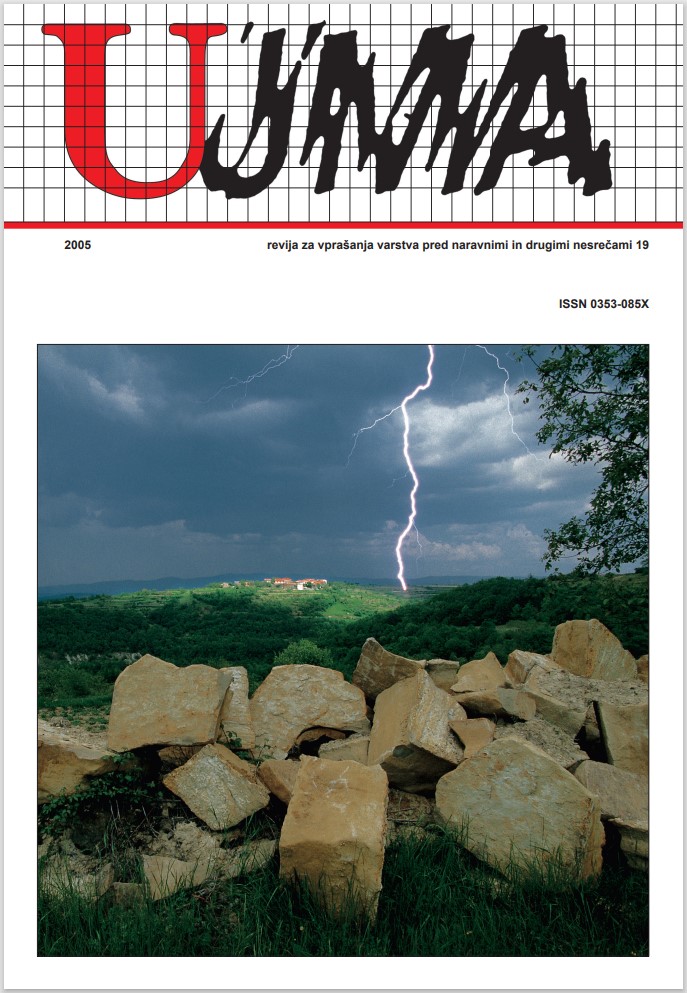WHAT MIGHT THE CLIMATE OF SLOVENIA LOOK LIKE IN THIS CENTURY?
Abstract
Global warming is no longer just a theory or a distant threat. The overwhelming agreement among the world’s preeminent climate scientists is that its impact can already be seen today and may grow worse in the future. This global warming is expected to significantly disrupt the climate system. As a result, regional temperatures and precipitation patterns will shift across the globe, affecting nearly every aspect of society. Changes in Sloveia’s climate are dependent on changes in the global climate and on local phenomena. There are as yet no reliable predictions on how Slovenia’s climate might change as the result of a change in the world’s climate. However, regional scenarios can be derived from global climate models. These are not predictions per se, as they only provide an impression of the extent to which global climate change might affect Slovenia’s climate. Such regional scenarios are need for adaptation strategies. The results of the simulations with general circulation models (GCM) are the basis for future climate change and impact studies. In the case of Slovenia, the results of simulations with five GCM were used. These were projected for 5 locations in Slovenia (Ljubljana, Novo mesto, Murska Sobota, Rateče and Bilje) by using the empirical downscaling method. The projections for air temperature changes are more reliable than for the amount of precipitation, especially for the warm half of the year. From what we know at present, the following tendency is also plausible: the climate of Slovenia will become warmer and drier.
References
Benestad, R. E., 2001. A comparison between two empirical downscaling strategies. Int. Jour. of Climatology, 21: 371–387.
Bergant, K., 2003. Projekcije simulacij globalne klime na lokalni nivo in njihova uporaba v agrometeorologiji. Doktorska disertacija. Univerza v Ljubljani, Bioteh niška fakulteta, Oddelek za agronomijo, 170 str.
Bergant, K., Kajfež - Bogataj, L., 2004. Nekatere metode za pripravo regionalnih scenarijev podnebnih sprememb. Acta agric. slov., 2004, vol. 83, št. 2, str. 273–287.
Bergant, K., Kajfež - Bogataj, L., 2005. N–PLS regression as empirical downscaling tool in climate change studies. Theoretical and Applied Climatology. Vol. 81 (1-2): str. 11–23.
EEA, 2004. Impacts of Europe changing climate. An indicator-based assessment. European Environment Agency, Copenhague (Denmark), Report 2/2004, Office for official publications of the European communities, Luxembourg, 107 str., http://www.eea.eu.int
Houghton, J. T., Ding, Y., Griggs, D. J., Noguer, M., van der Linden, P. J., Dai, X., Maskell, K., Johnson, C. A., 2001. Climate change 2001: The scientific basis. Cambridge, Cambridge Univ. Press: 752 str., HYPERLINK “http://www.grida.no/climate/ipcc_ tar/wg1/index.htm” http://www.grida.no/climate/ ipcc_tar/wg1/index.htm
Kajfež - Bogataj, L., 2001. Kakšna bo klima 21. stoletja? Zbornik Biotehniške fakultete, Univerza v Ljubljani, Kmet., 77-2, str. 309–318.
Metz, C., Davidson, O., Swart, R., Pam, J., 2001. Climate change 2001: Mitigation. Cambridge Univ. Press: 881 str., HYPERLINK “http://www.grida. no/climate/ipcc_tar/wg3/index.htm” http://www. grida.no/climate/ipcc_tar/wg3/index.htm
Mitchell, T. D, Hulme, M., New, M., 2002. Climate data for political areas. Area 34: 109–112.
Downloads
Published
Issue
Section
License

This work is licensed under a Creative Commons Attribution-NonCommercial-NoDerivatives 4.0 International License.
The articles are made available to the public under Creative Commons Attribution-NonCommercial-NoDerivatives 4.0 International (CC BY-NC-ND 4.0).


